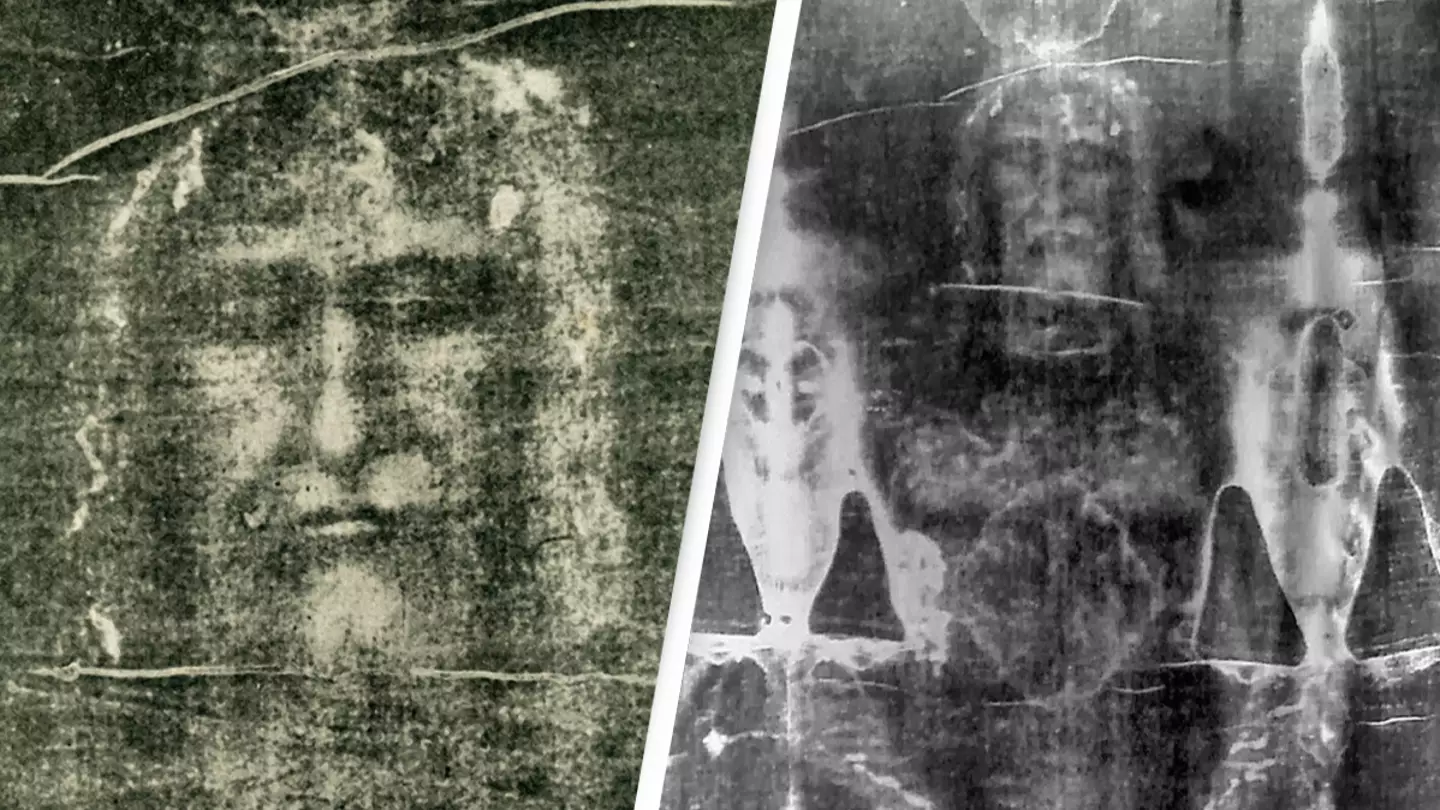Things might be heating up in the theologian community as researchers dispell the idea that the Shroud of Turin was used in Jesus’ burial.
Regardless of your beliefs, a lot of research goes into the history of religion, with historians and theologians paying close attention to potential events and artefacts.
When it comes to Christianity and the time of Jesus, things can prove to be particularly tricky due to the time period being almost 2,000 years ago.
Yeah, fun fact, if Jesus did exist, he didn’t die and wasn’t born on 0AD, it is all rather confusing but that is history for you.
One artifact that was believed to have had close ties to the Christian savior was the Shroud of Turin, a centuries-old linen cloth, that some thought was used to cover Jesus after his crucifixion.
The item is currently on display at the Cathedral of St. John the Baptist in Turin, Italy.
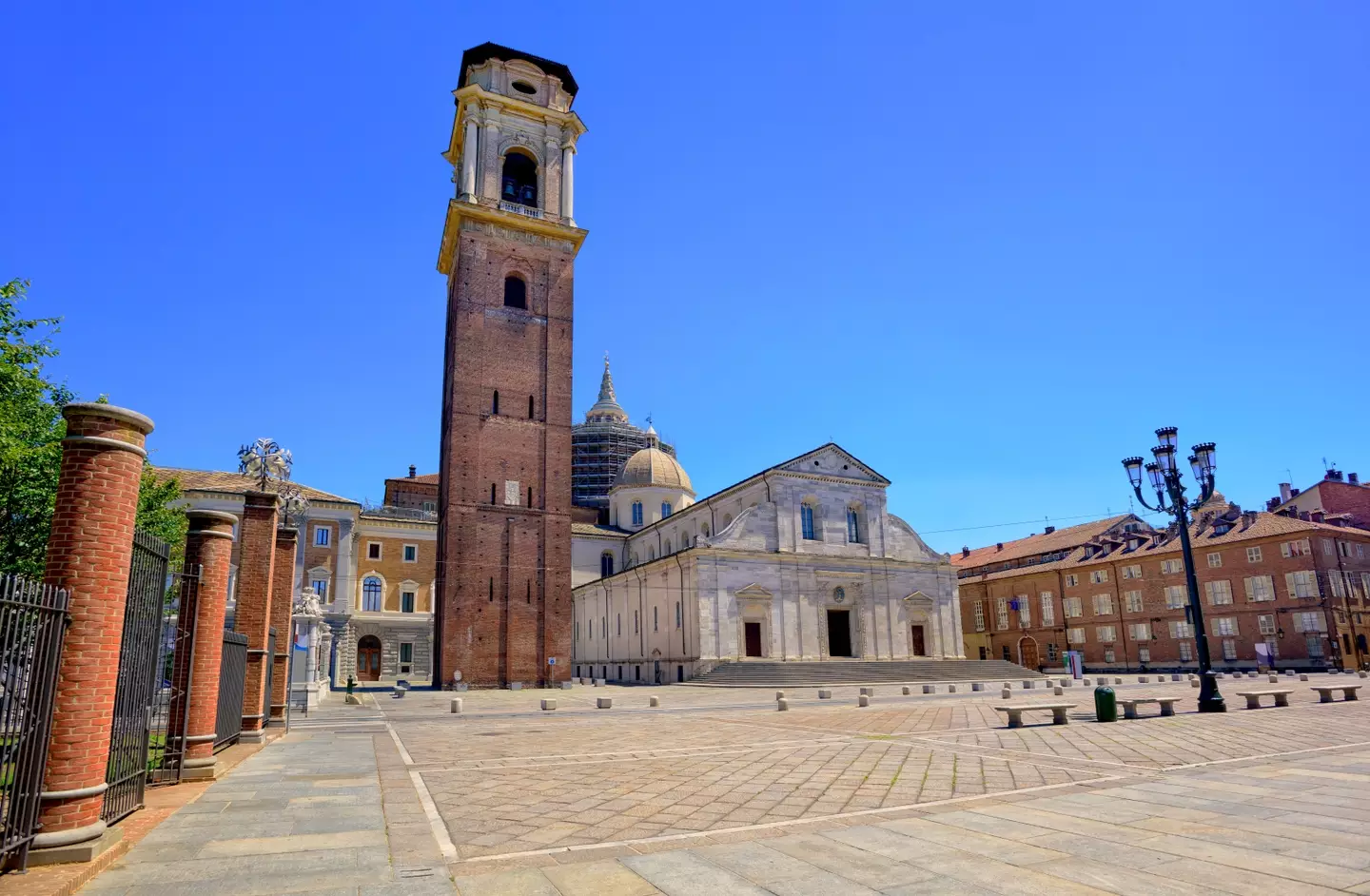
Duomo di Torino is catholic cathedral where the Holy Shroud of Turin is rested (Getty Stock Image)
However, Brazilian graphics expert Cicero Moraes created a virtual simulation of the shroud to place over an image of a body to see whether impressions on the fabric were a match.
He argued that rather than the cloth used, it is actually a piece of Christian art.
This helps support the other ideas surrounding the cloth, that argue it can only be traced to the mid 14th century, making it a forgery rather than an item almost 2000 years old.
Moraes said: “I think the possibility of this having happened is very remote.
“On one side are those who think it is an authentic shroud of Jesus Christ, on the other, those who think it is a forgery.
“But I am inclined towards another approach: that it is, in fact, a work of Christian art, which managed to convey its intended message very successfully.
“It seems to me more like a non-verbal iconographic work that has very successfully served the purpose of the religious message contained within.”
Moraes also explained how the simulation disproved the idea that it was the shroud used to cover Jesus.
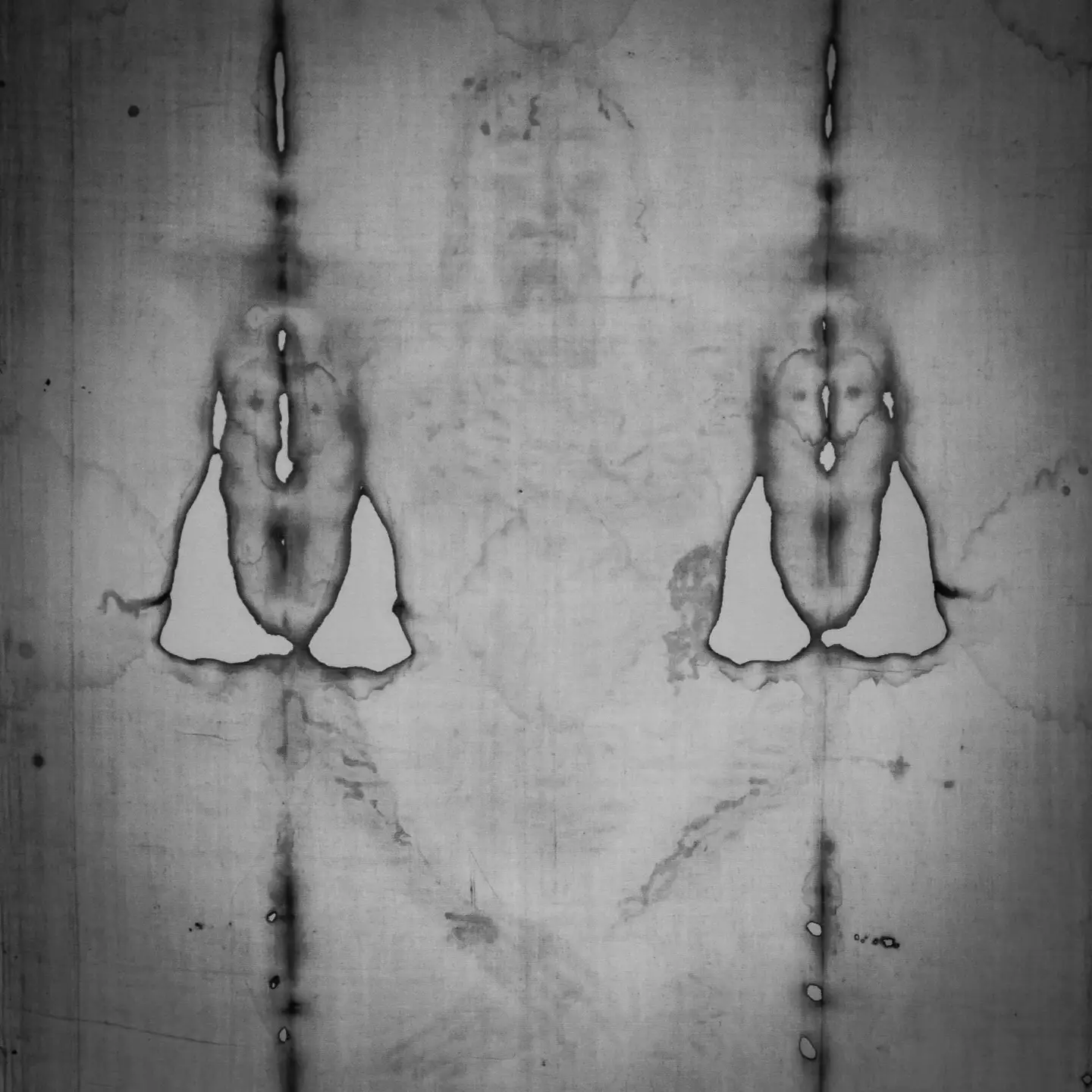
New research argues that the Shroud of Turin was not used to cover Jesus (Getty Stock Image)
When laid flat, the virtual fabric showed ‘a distorted and significantly more robust image’ than that on the shroud. He noted that the printing stains from a human body would be more swollen and the impression left by a 3D body shows the striking difference with the shroud.
He added: “When you wrap a 3D object with a fabric, and that object leaves a pattern like blood stains, these stains generate a more robust and more deformed structure in relation to the source.”
Only time will tell if people’s view on the shroud will shift to match the new arguments made following further research.
Conversation5 Comments
Featured Image Credit: Getty/Print Collector/Getty/Photo 12
Topics: Religion, History
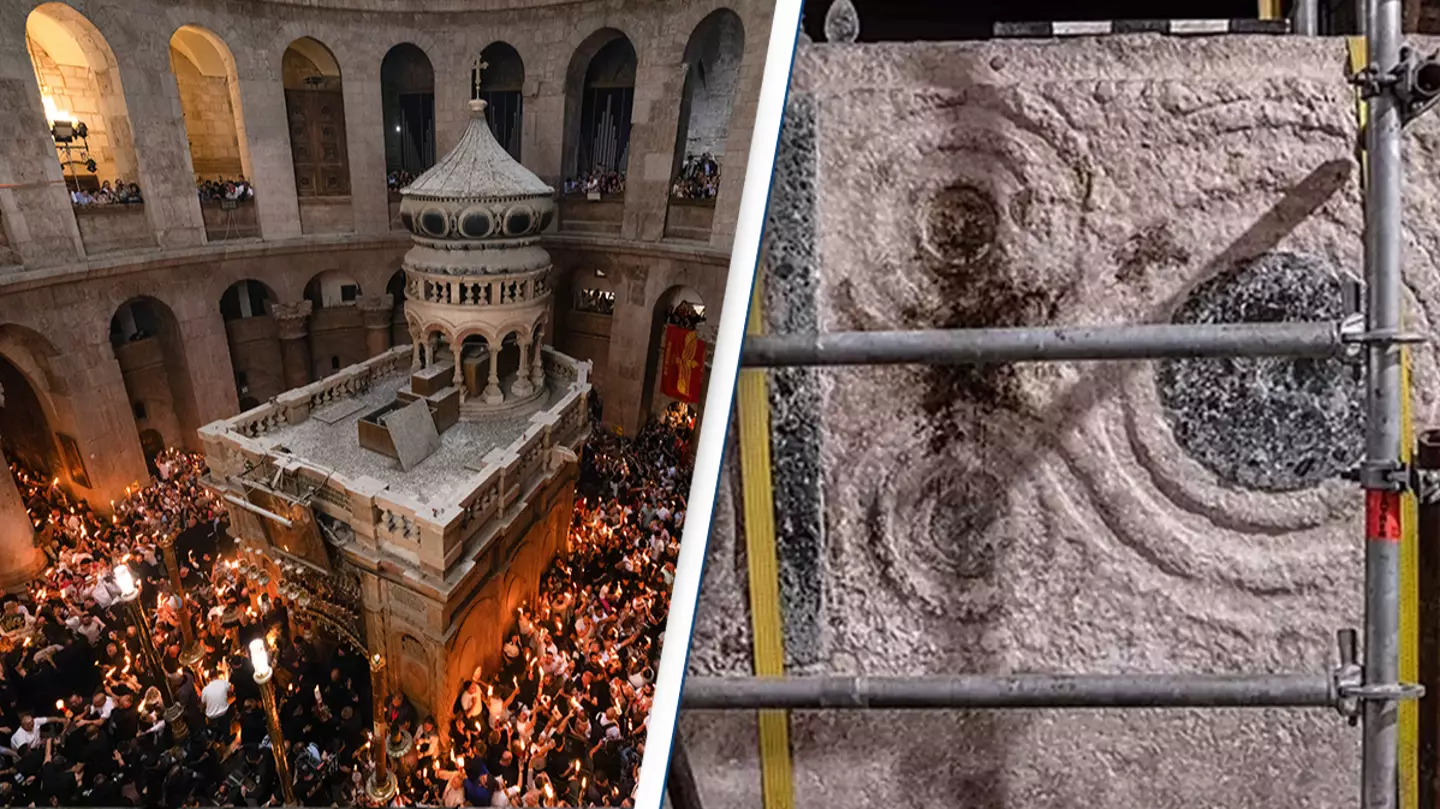
Austrian archaeologists have revealed details of an ‘sensational’ discovery made at one of the holiest sites in Christianity.
The Church of the Holy Sepulchre, also known as the Church of the Resurrection, is a fourth-century institution nestled within the Old City of Jerusalem.
The site is considered one of the holiest in the world as Christians believe the area is where Jesus was buried and later rose from the dead.
Experts have recently flocked to the church following the news that construction workers were awestruck upon turning over a chunk of seemingly worthless marble.
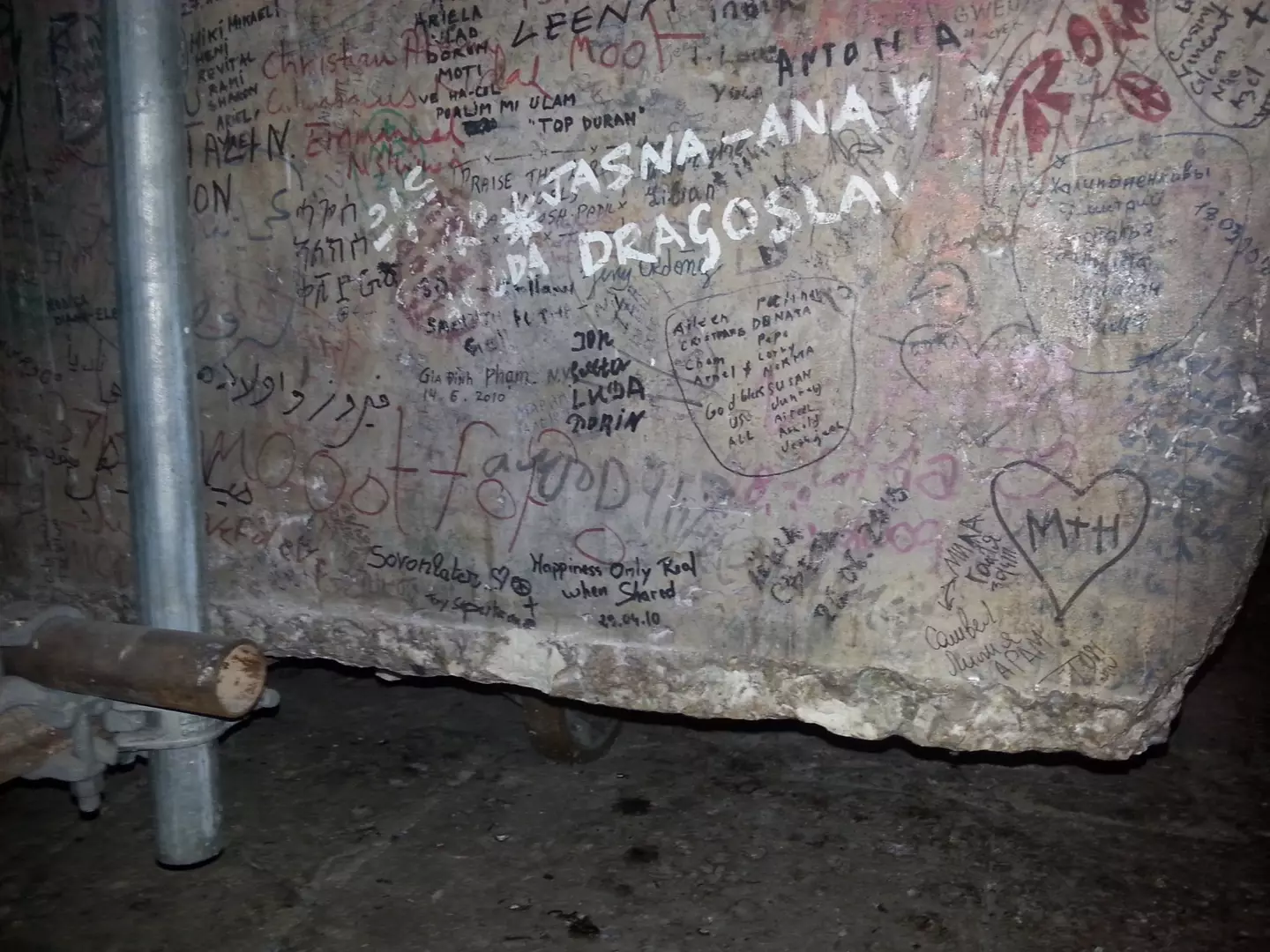
A graffiti-covered stone has caught the world’s attention. (Amit Re’em/Israel Antiquities Authority)
The stone, which had been sitting in a publicly accessible corridor near the rear of the building, measured eight feet long and five feet wide.
On the side facing the public, the marble was covered in graffiti.
However, when the stone was flipped around, revellers saw that the other side was decorated with ribbon ornaments and distinct markings.
Upon further inspection, it was declared that these unique decorations were made using a special production technique called ‘Cosmatesque’.
The art form was once practised by guild masters in papal Rome and saw large surfaces being covered with smaller quantities of precious marble.
Excitingly, archaeologists have since identified the slab as the front panel of the altar consecrated in 1149.
Historians previously believed the largest-known medieval altar, used by Crusaders in the Middle Ages, had been destroyed in a fire in 1808 and thus lost for decades.
“For historians, this find is a sensation in several respects,” wrote the Austrian Academy of Sciences (OeAW).
While remarking on the brilliance of the find, researchers also questioned how the important slab had ‘remained hidden for so long in such an intensively researched building as the Church of the Holy Sepulchre’.
Speaking about the significance of the altar Ilya Berkovich, historian at the Institute for Habsburg and Balkan Studies of the Austrian Academy of Sciences, said: “We know of pilgrim accounts from the 16th, 17th and 18th centuries about a magnificent marble altar in Jerusalem.
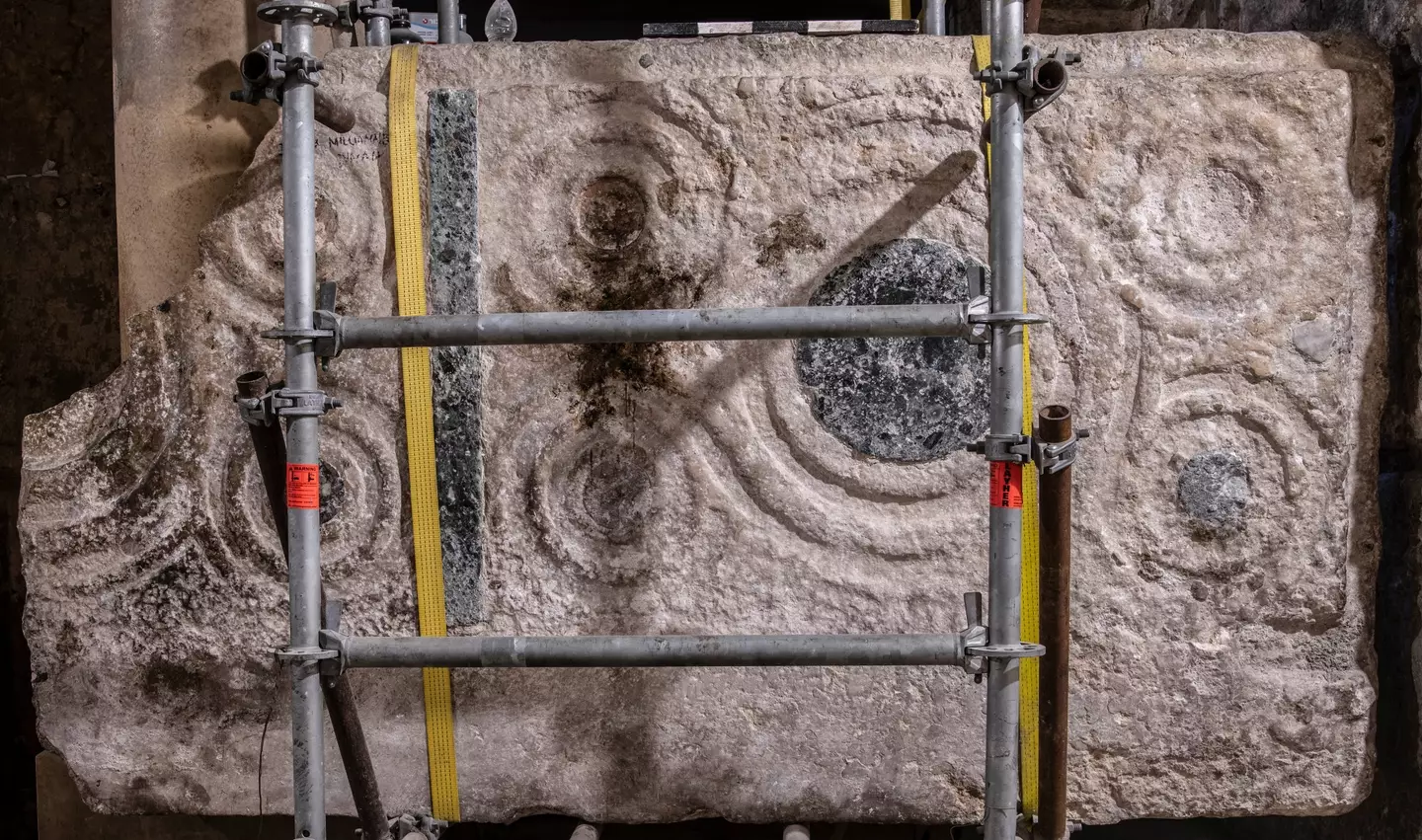
The altar was consecrated in 1149. (Shai Halevi/Israel Antiquities Authority)
“In 1808, there was a major fire in the Romanesque part of the Church of the Holy Sepulchre,” said Berkovich. “Since then, the Crusaders’ altar was lost – at least that’s what people thought for a long time.”
This discovery, hailed as ‘sensational’ by the OeAW, is thought to have been created with the Pope’s blessing.
Moreover, they write that it was commissioned to honor Christianity’s holiest church as Cosmatesque art was a cherished status symbol.
“The Pope thus paid tribute to the holiest church in Christianity,” Berkovich said.
Following the recent discovery of the altar, the expert and his team hope to research further and dive into the papal archives to reveal more details about the stone.
They also want to uncover the Cosmatesque master who created the artwork.
Featured Image Credit: Getty Images/FAIZ ABU RMELEH/Middle East Images/AFP/Shai Halevi/Israel Antiquities Authority
Topics: History, Science, Religion, World News
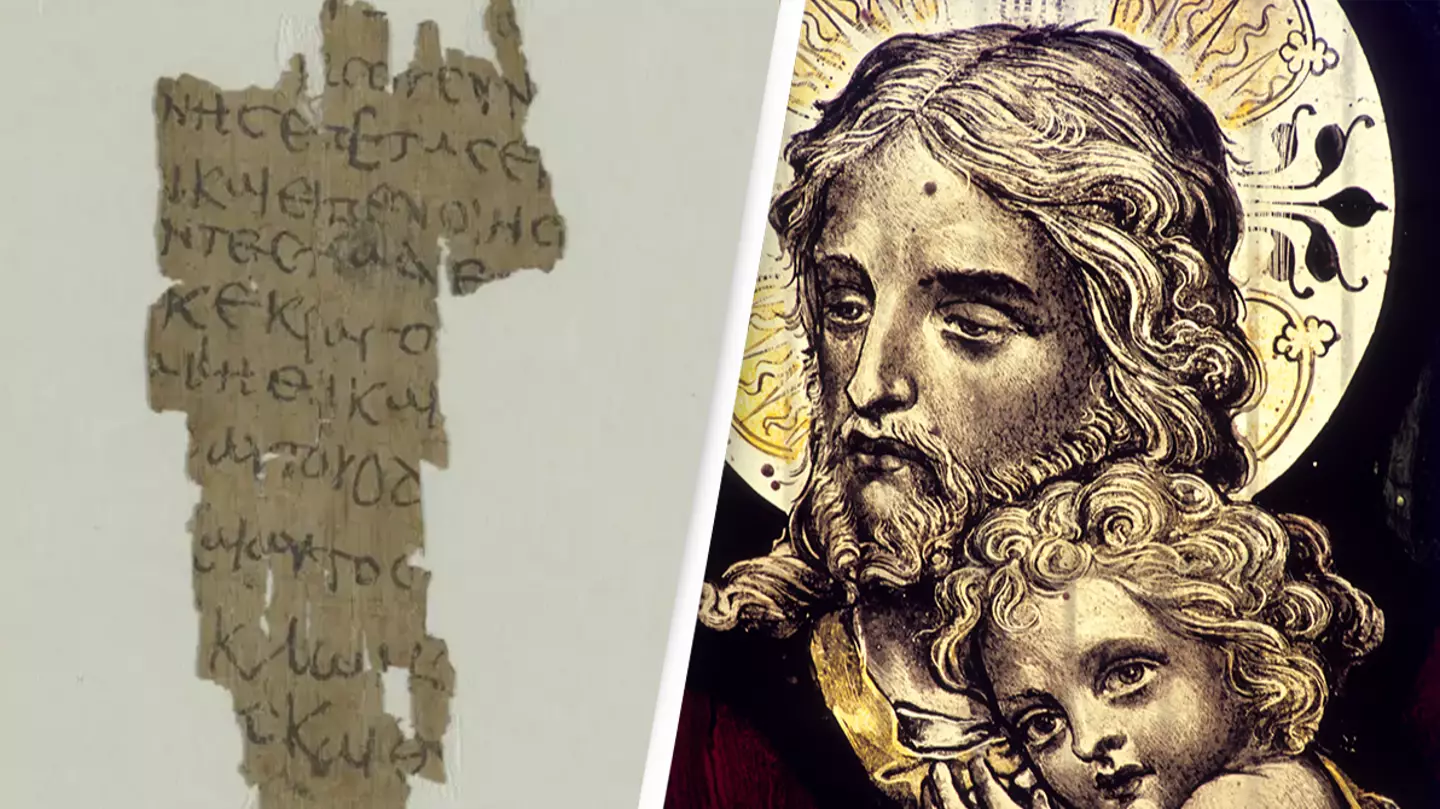
A manuscript dating back over 1,000 years has given rare insight into Jesus’ life.
The newly deciphered text is believed to be around 1,600 years old and allegedly omitted from the Bible because there were questions over it’s authenticity.
The manuscript was written on papyrus and has been stored at a library in Hamburg, Germany, as it was thought to be insignificant.
.jpg)
A document has been found to give insight into Jesus’ early childhood. (Pascal Deloche/Getty Stock)
But experts stumbled across the document while analyzing manuscripts, with one person spotting Jesus’ name.
It’s since been revealed that that the script contains information about Jesus Christ’s early childhood – which has now been labelled as the earliest known account on the topic.
Experts have also said that the text is the earliest surviving copy of the Infancy Gospel of Thomas.
Speaking about the significance of the recent discovery, Lajos Berkes, a theology lecturer and one of the two men who deciphered the document, said in a press release: “The papyrus fragment is of extraordinary interest for research.
“It was thought to be part of an everyday document, such as a private letter or a shopping list, because the handwriting seems so clumsy.
“We first noticed the word Jesus in the text. Then, by comparing it with numerous other digitized papyri, we deciphered it letter by letter and quickly realized that it could not be an everyday document.”
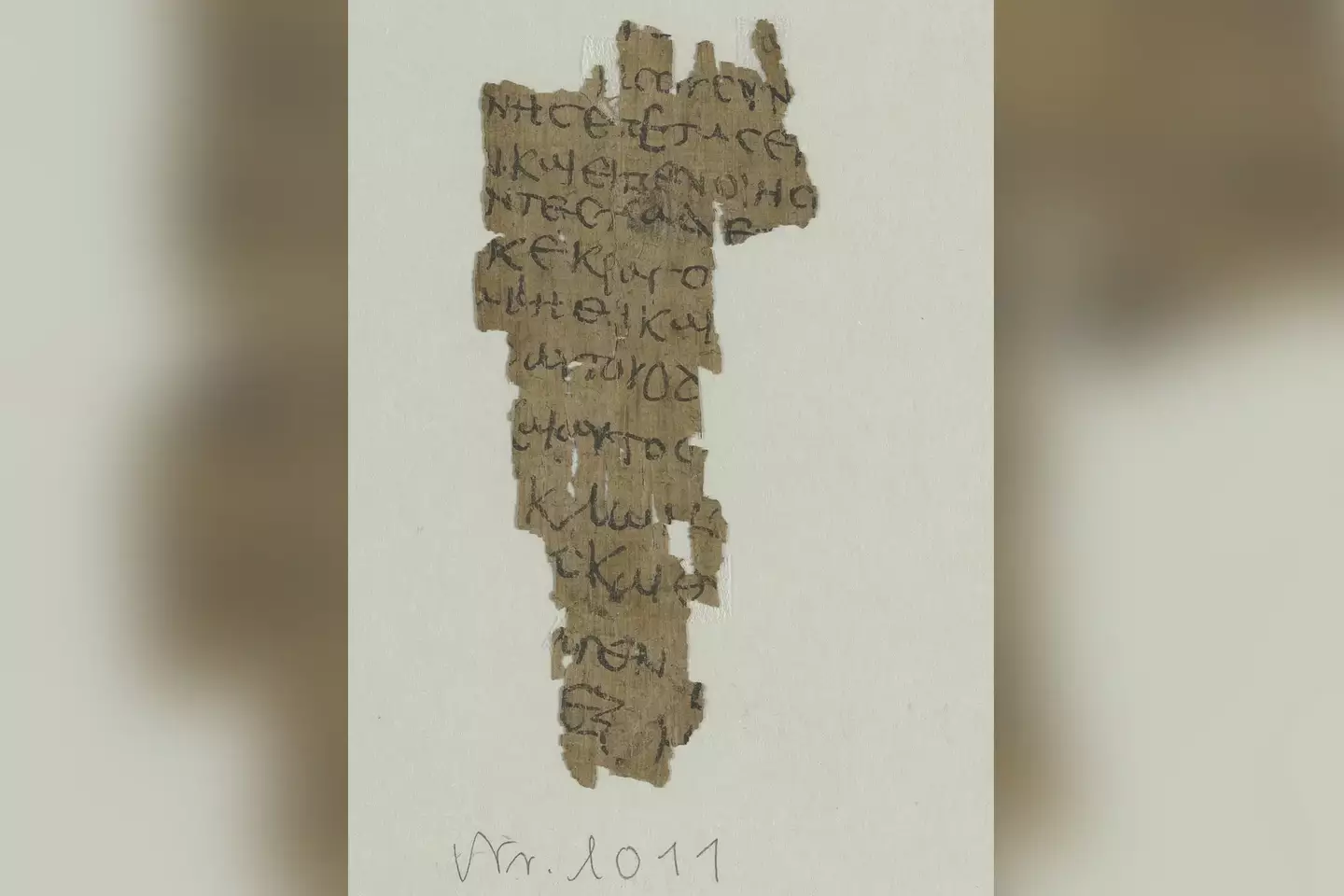
The tiny document was initially believed to be insignificant. (Universitätsbibliothek Hamburg / PD)
Professor Gabriel Nocchi Macedo, the second individual to decipher the document, further said of their find: “Our findings on this late antique Greek copy of the work confirm the current assessment that the Infancy Gospel according to Thomas was originally written in Greek.”
While significant, the text is only short and is only 13 lines-long.
It’s penned in Greek letters which originates from late antique Egypt, which was a Christian society at that time, New York Post reports.
As to what the script says, apparently it discusses the beginning of the ‘vivification of the sparrows’. This is a story about story in which a young Jesus turns 12 clay sparrows into live birds.
It’s believed Jesus was five years old at the time of the story, and it’s described as the late Messiah’s second miracle.

The manuscript was reportedly omitted from the Bible. (Tetra Images/Getty Stock)
Like this recent discovery, other facts about Jesus’ life are still being made to this day.
Just last year, the site where Jesus ‘healed a blind man’ was unearthed after 2,000 years.
The Pool of Siloam, located in the southern part of the City of David archaeological site in Jerusalem, Israel, is allegedly the place where Jesus told a blind man that he could see and a miracle was performed in the pool.
The site has been hailed as having ‘historic, national and international significance’ and will be open for the public to see.
Featured Image Credit: Universitätsbibliothek Hamburg/Getty Images/Dinodia Photo
Topics: News, World News, History, Religion

Seeing as it took place over 2,000 years ago, artifacts that can be traced to Jesus Christ’s life and death are scarce and fascinating to come by.
Similarly, due to how long ago Jesus walked the Earth, small details surrounding his death are often disputed in the modern day by believers and nonbelievers alike.
While these disputes come through in big and small ways, one of the most aggressively contested debates is whether the infamous Turin Shroud – currently on display at the Cathedral of St. John the Baptist in Turin, Italy – was the burial cloth of Jesus Christ when he died 2,000 years ago.
The shroud, which was first discovered in the late 14th century, has been subject to scrutiny since that initial discovery, with many believing that the theory Jesus Christ wore it was ridiculous and false.
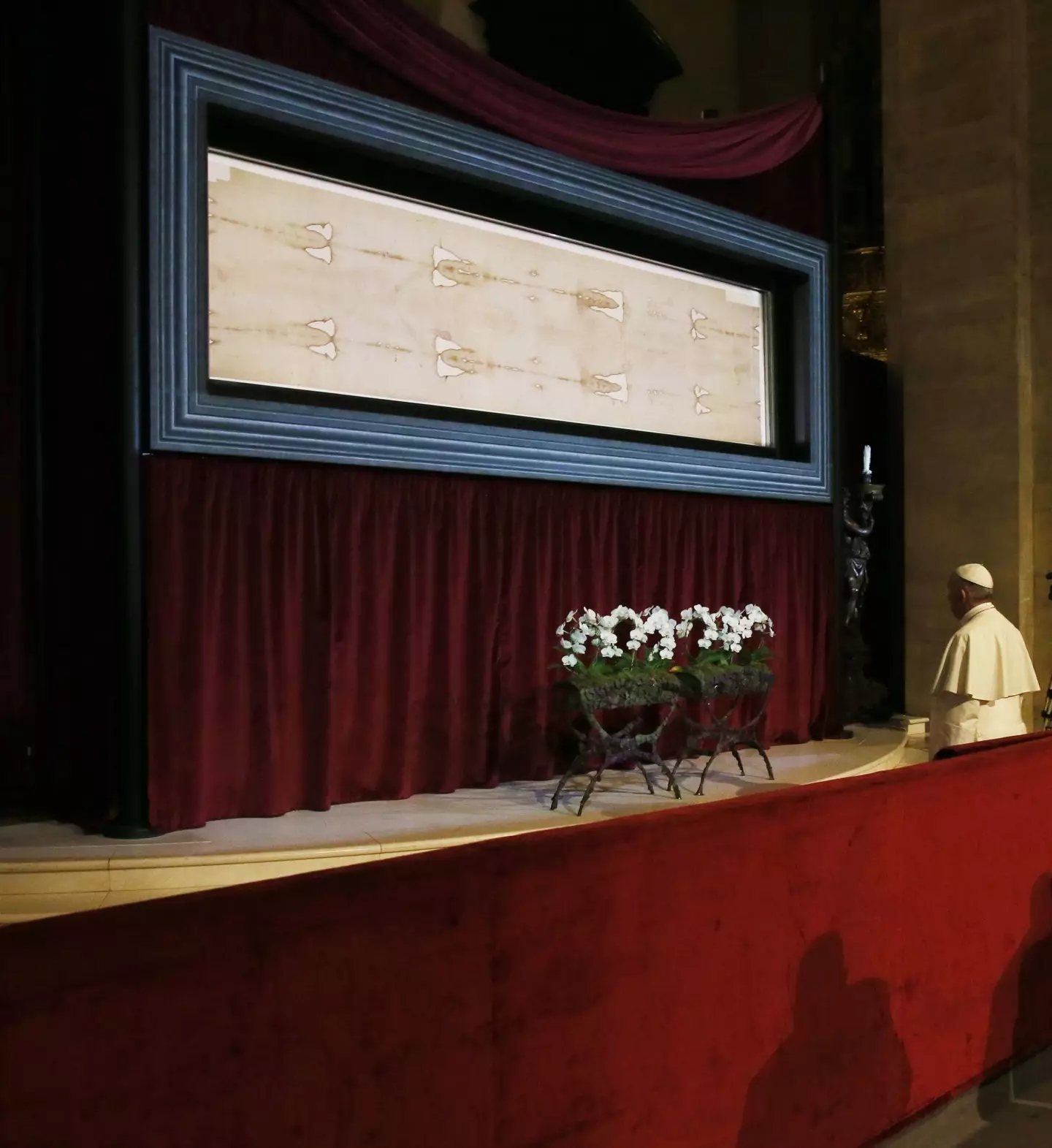
The Turin Shroud is currently being preserved at the Cathedral of St. John the Baptist in Turin, Italy. (Grzegorz Galazka/Archivio Grzegorz Galazka/Mondadori Portfolio via Getty Images)
Up until recently, many people even believed that the cloth was made during the Middle Ages, with previous studies placing its creation anywhere between 1260 and 1390 AD, centuries after the Common Era began.
However, a recent study has shown results that are contradictory to those of its predecessors.
The new study, which was published in Heritage, a public journal that covers heritage science, says that the Turin Shroud’s history would theoretically coincide with the theory that it was adorned by Jesus Christ two millennia ago.
The study utilized X-ray technology to identify that the majority of the cloth’s aging took place before its discovery by the church in 1390 AD, suggesting that it likely existed for far longer than a century before that point, as was suggested by previous studies.
Instead, the 2000-year mark was deemed to be more accurate, giving believers that the shroud was Jesus Christ’s burial cloth more standing scientifically.
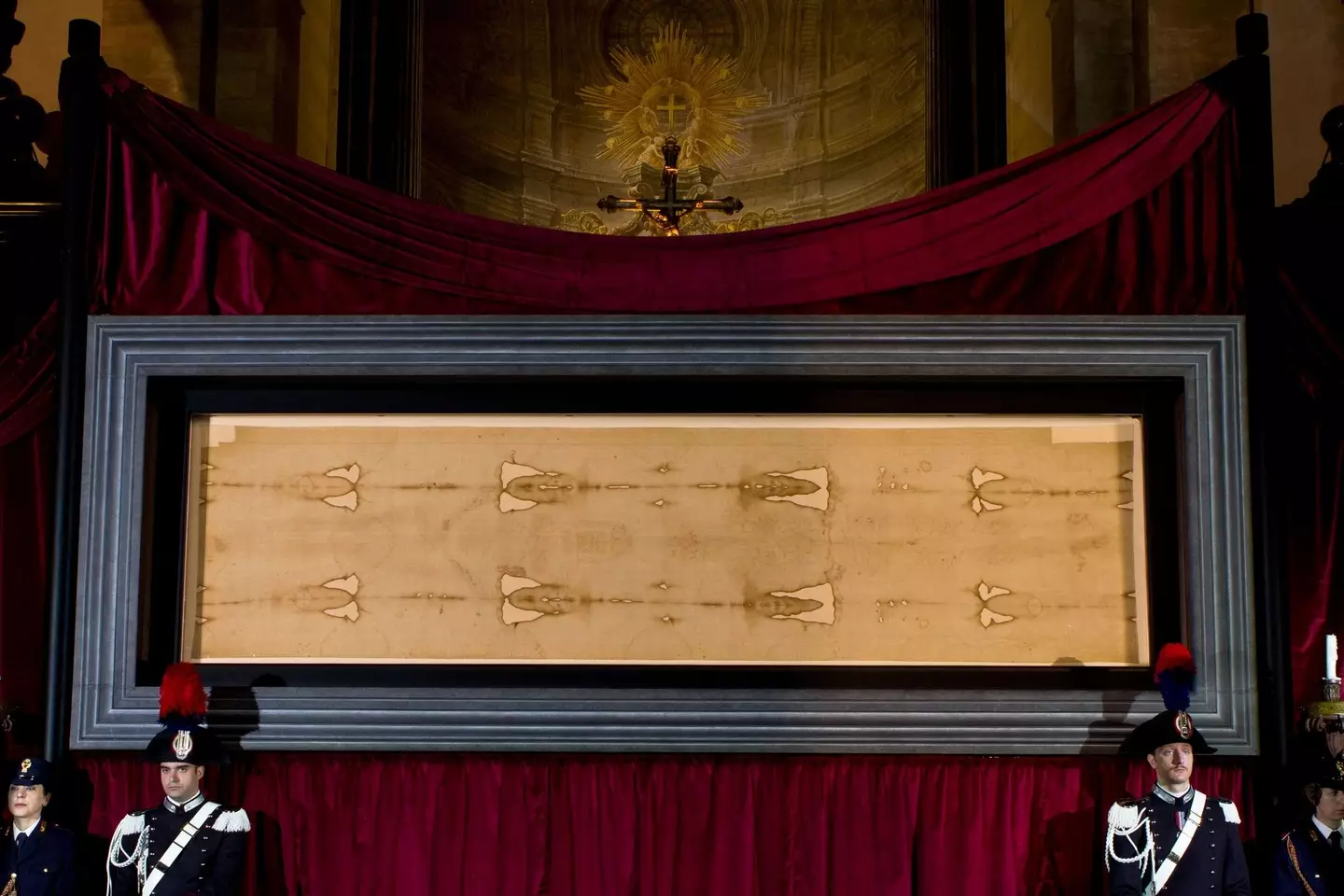
The Turin Shroud is believed by many to be the death cloth of Jesus Christ. (Marco Destefanis/Pacific Press/LightRocket via Getty Images)
However, the study does admit that they cannot say without a shadow of a doubt that the shroud’s timeline matches up with Jesus Christ’s death, noting that there are a few caveats to their findings.
Most notably, due to not knowing what could’ve happened to the cloth throughout the centuries before it was discovered and preserved by the church in 1390 AD. Most importantly, whether or not the cloth was kept at roughly 22C and with an average humidity of 55 percent for the 1300 years prior to its discovery would make or break the study’s findings.
To identify whether that was the case, the researchers would need a larger sample of the cloth than the 0.5 mm × 1 mm sample they used in this study.
The study itself concluded: “A more accurate and systematic X-ray investigation of more samples taken from the TS fabric would be mandatory to confirm the conclusions of our study.”
Featured Image Credit: Bettmann / Contributor/Photo12/Universal Images Group via Getty Images
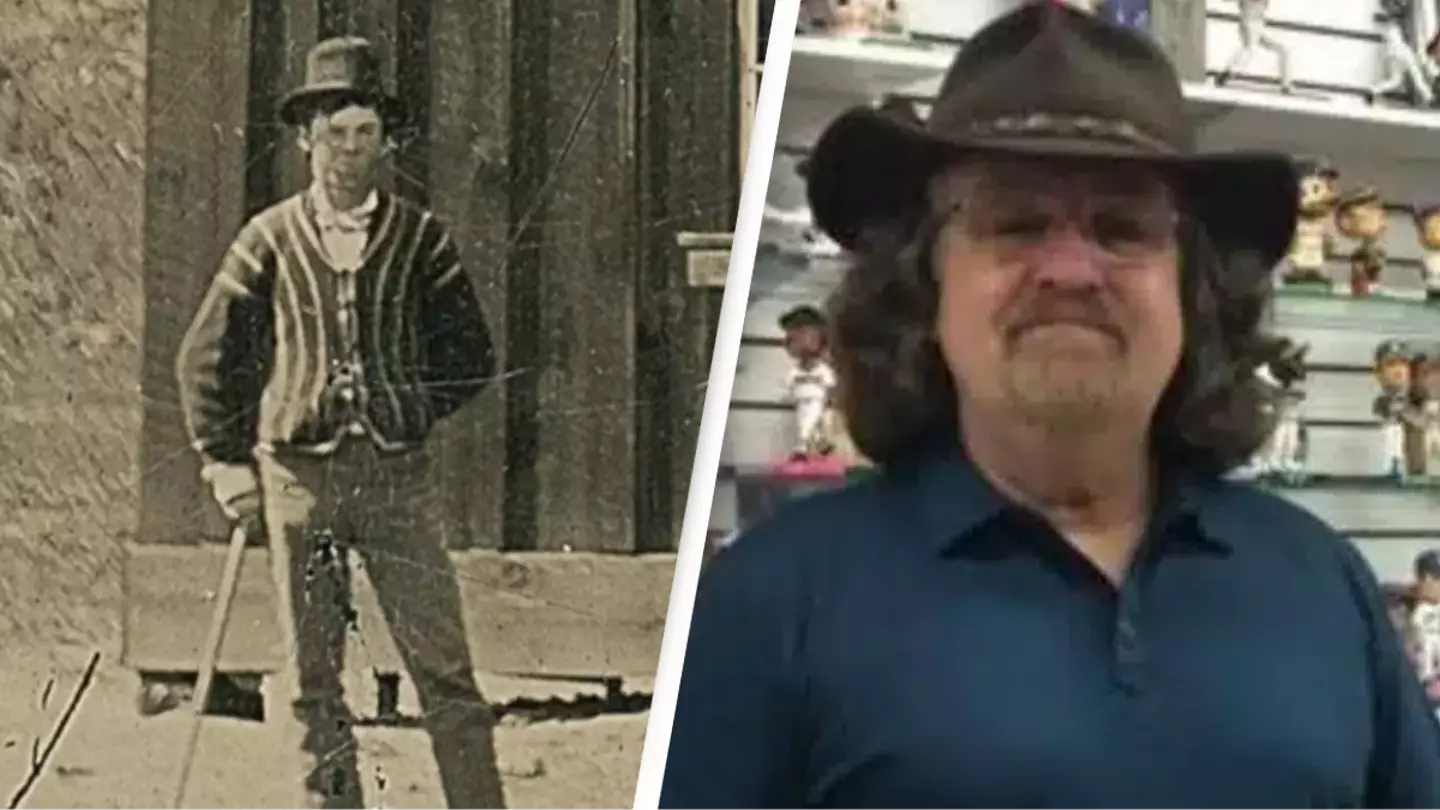
A photo dubbed ‘the holy grail of Western Americana’ was discovered by a man in an antiques shop by chance.
Collector Randy Guijarro happened across the photograph in question at a store in Fresno, California, and bought it for just $2 in 2010.
The black and white tintype photograph shows a group of people stood outside a barn, some of whom were playing croquet.
Taking the photo home, Randy went on to study it under a microscope and recognized one of the people.
He realized that one of the men playing croquet was Henry McCarty – best known as 1800s outlaw, Billy the Kid.
Randy had the image authenticated by a San Francisco-based Americana company, Kagin’s, which confirmed that it was McCarty in the photo.
He was seen alongside several other members of the Lincoln County Regulators in New Mexico.
It’s believed the snap dates back to 1878 – three years before McCarty was killed.
Randy’s find is only the second authenticated photograph of the notorious outlaw. The first genuine authenticated photo of Billy the Kid sold for $2.3 million in 2011.

Randy Guijarro purchased this photo for $2 in 2010 (Kagin’s Inc.)
With its rarity in mind, it went on to be valued at a whopping $5 million, The Guardian reported in 2015.
When Randy first took the photo in to be authenticated, the experts were understandably skeptical.
“An original Billy the Kid photo is the holy grail of Western Americana,” David McCarthy from Kagin’s told The Guardian.
“We had to be certain that we could answer and verify where, when, how and why this photograph was taken. Simple resemblance is not enough in a case like this – a team of experts had to be assembled to address each and every detail in the photo to ensure that nothing was out of place.”

Further investigations found Billy the Kid to be in the photo (Kagin’s Inc.)
Following his historic discovery, Randy urged others to go treasure hunting.
“I hope this prompts others out there to look into trunks and attics because there are so many lost treasures out there,” he said.
In regards to what he planned on doing with his newfound wealth, Randy went on: “We could use a new vehicle. We’d really like to look for lost pieces of history be it US or worldwide. We love to be adventurers. The hunt is a really grand thing.”
The monumental find and its five-year journey to being authenticated was detailed in a National Geographic documentary narrated by Kevin Costner called Billy the Kid: New Evidence.
